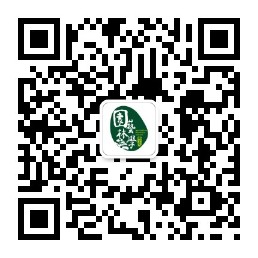近日,华中农业大学果蔬园艺作物种质创新与利用全国重点实验室、湖北洪山实验室、园艺林学学院李春龙教授课题组在Journal of Integrative Plant Biology上发表了题为“The CBL1/CIPK23 phosphorylates tonoplast sugar transporter TST2 to enhance the sugar accumulation in sweet orange (Citrus sinensis)”的研究论文,揭示了CBL1/CIPK23-TST2模块响应钙信号通过调控液泡膜糖转运蛋白活性作用于柑橘果实糖积累的机制。
柑橘是我国及全球产量最高的水果,其风味和营养价值备受消费者青睐。其中果实甜度是影响消费者喜好和选择的重要因素。可溶性糖主要积累于果实液泡中,这一过程依赖于液泡膜定位的糖转运蛋白,但目前关于柑橘果实糖分累积的具体机制尚未完全了解。
为了深入理解柑橘果实风味品质的形成以及调控机理,该研究在课题组前期柑橘果实液泡蛋白组的基础上,发掘到与可溶性糖积累显著正相关的液泡膜转运蛋白CsTST2。利用酵母和爪蟾蛙卵体系证明CsTST2具有转运己糖和双糖的功能(图1)。通过柑橘汁胞瞬时转化、柑橘愈伤组织及番茄材料稳定遗传转化,证明过表达CsTST2可以显著提高转基因材料中糖含量,而干涉表达则降低糖含量。

图1. CsTST2具有己糖和蔗糖转运活性
通过酵母双杂交文库筛选,鉴定到与CsTST2互作的蛋白CsCIPK23。体外和体内实验证实CsCIPK23与CsTST2非跨膜LOOP环互作,并且磷酸化Ser277/337/354位点,以上位点突变为非磷酸化状态后降低CsTST2的糖转运活性。进一步分析表明CsCIPK23与CsCBL1互作响应钙信号,并且CsCIPK23及钙处理增加可溶性糖积累,这一过程依赖于CsTST2的存在及其磷酸化修饰水平。
综上,本研究证实了CsTST2贡献于柑橘果实液泡中可溶性糖的转运积累,而CsCIPK23通过与钙信号传感器CsCBL1形成复合物,磷酸化修饰CsTST2以增强其转运活性,进一步促进柑橘果实糖分的积累(图2)。这项研究不仅揭示了CsTST2在柑橘果实糖积累中的重要作用,还为钙信号调控果实风味品质形成的分子机制提供新的见解。

图2. CsCBL1CIPK23-CsTST2调控柑橘液泡中糖积累的模式图
华中农业大学园艺林学学院李春龙和刘继红教授为共同通讯作者,2022级果树学博士研究生李梦迪为该论文的第一作者。该研究依托华中农业大学果蔬园艺作物种质创新与利用全国重点实验室平台,获得国家重点研发计划项目、国家自然科学基金项目等项目资助。
【英文摘要】
Fruit taste quality is greatly influenced by the content of soluble sugars, which are predominantly stored in the vacuolar lumen. However, the accumulation and regulation mechanisms of sugars in most fruits remain unclear. Recently, we established the citrus fruit vacuole proteome and discovered the major transporters localized in the vacuole membrane. Here, we demonstrated that the expression of tonoplast sugar transporter 2 (CsTST2) is closely associated with sugar accumulation during sweet orange (Citrus sinensis) ripening. It was further demonstrated that CsTST2 had the function of transporting hexose and sucrose into the vacuole. Overexpression of CsTST2 resulted in an elevation of sugar content in citrus juice sac, calli, and tomato fruit, whereas the downregulation of its expression led to the reduction in sugar levels. CsTST2 was identified as interacting with CsCIPK23, which binds to the upstream calcium signal sensor protein CsCBL1. The phosphorylation of the three serine residues (Ser277, Ser337, and Ser354) in the loop region of CsTST2 by CsCIPK23 is crucial for maintaining the sugar transport activity of CsTST2. Additionally, the expression of CsCIPK23 is positively correlated with sugar content. Genetic evidence further confirmed that calcium and CsCIPK23‐mediated increase in sugar accumulation depends on CsTST2 and its phosphorylation level. These findings not only unveil the functional mechanism of CsTST2 in sugar accumulation, but also explore a vital calcium signal regulation module of CsCBL1/CIPK23 for citrus sweetness quality.
原文链接:https://onlinelibrary.wiley.com/doi/10.1111/jipb.13812
文字:李梦迪
审核:李春龙






